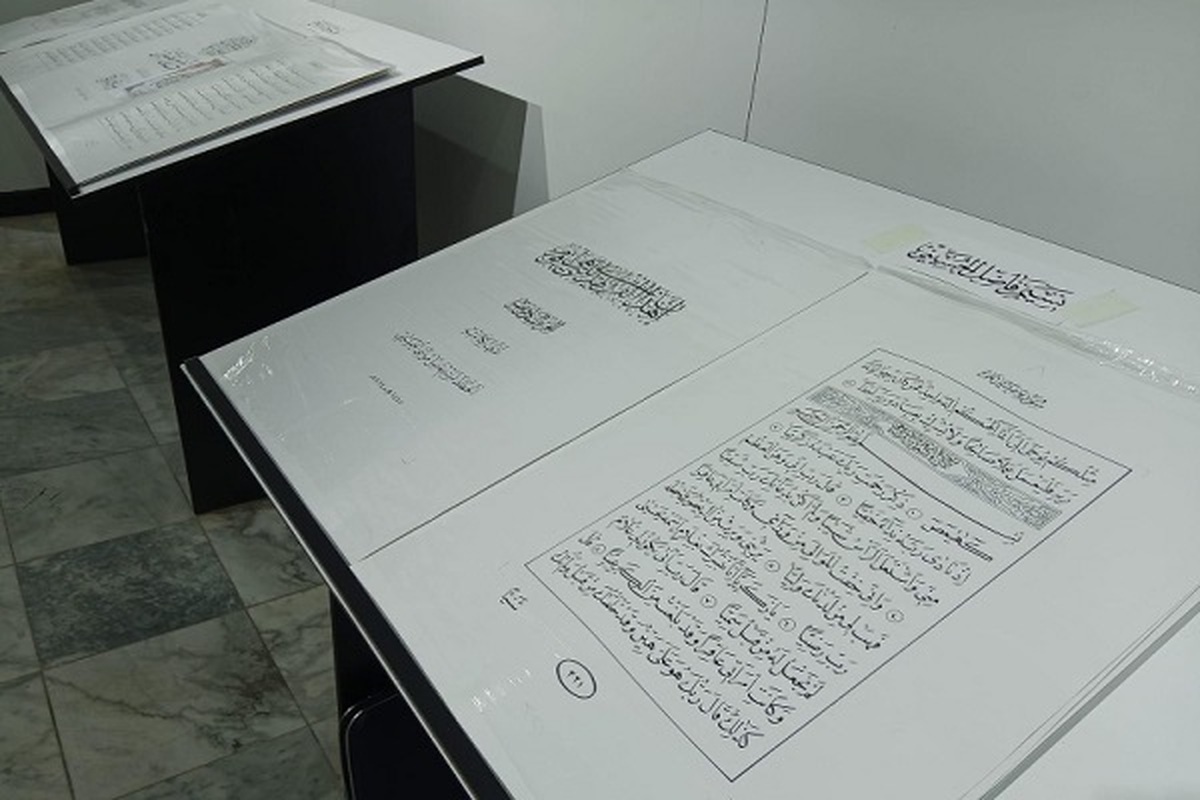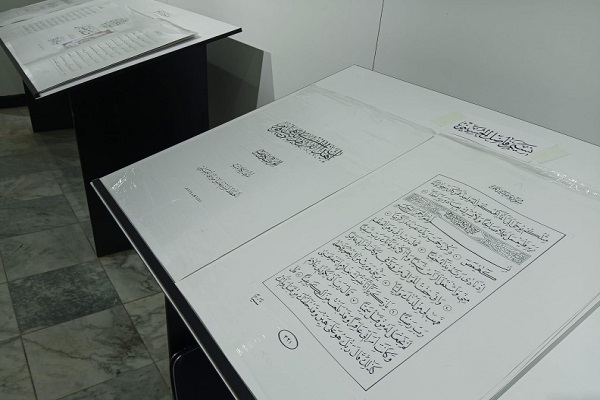Quran Handwritten by 30 Iraqi Calligraphers on Display at Baghdad Expo


The calligraphers themselves are present at the expo, titled “Quranic inscription”, which has been organized in collaboration with the Ibn al-Bawwab Institute of Islamic Arts and the General Directorate of Islamic Arts.
In this calligraphy project, great attention was paid to details such as the quality of the paper, the size of the Quran, the type of ink used, and the size of the pens employed by the calligraphers, all of which have given this artwork a distinctly unique character.
Abdullah Hussein al-Hamdani, an Iraqi calligrapher, shared his experience participating in the exhibition. He noted that the time required for the participants to write the Quran varied for each individual, typically ranging from two to three months.
Regarding his contribution to the writing of the Holy Quran, al-Hamdani explained that he was assigned to write the third Juz (part) of the Quran through a draw. This process took him about 50 days for preparation, writing, and adding final touches. He added that all participants used the Naskh script to ensure a uniform style.
The director general of the Ibn al-Bawwab Foundation for Islamic Arts also spoke about the project of transcribing the Holy Quran, which is one of the most significant initiatives led by a group of Iraqi calligraphers.
Hussein Abdullah explained that initially, this group would meet weekly at the Museum of Civilization to teach calligraphy to enthusiasts for free, which led to the idea of transcribing the Quran.
Read More:
He added that one of the attendees proposed the idea of transcribing the Quran, and it was warmly welcomed by the calligraphers.
He said 30 male and female calligraphers, along with more than 5 reserve calligraphers from various governorates of Iraq, were gathered and began transcribing the Quran during the holy month of Ramadan, and it took them between two to three months to complete the work.
The first copy of the Holy Quran was completed in 2023 with the collaboration of a group of prominent Iraqi calligraphers, including Ahmed Amrli, Hazem Farhan al-Sanjari, Ahmed Aboud, Fuad al-Samarraei, and others, he noted.
Additionally, it was agreed to standardize the width of the pens, the type of ink, the line spacing, and the distance between letters to ensure uniformity and artistic coherence in the text, he went on to say.
4272486



